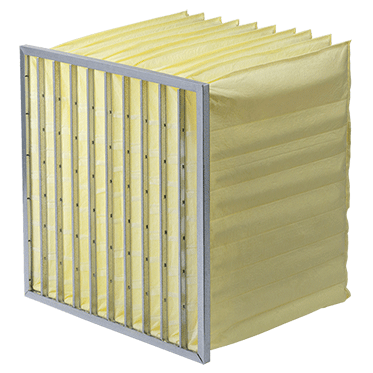Description
High Efficiency — Low Resistance
Rated 95% on 0.3 μm particles, MERV 16 per ASHRAE Standard 52.2, BioCel M-Pak filters have the advantage of a much lower pressure drop than a typical HEPA filter (0.36″ versus 1.0 in. w.g. at 250 FPM) or even a high-capacity HEPA filter (0.8″ vs 1.4″ w.g. at 500 FPM). BioCel M-Pak filters fill the gap between ASHRAE-grade high-efficiency filters and ultra-high-efficiency HEPAs, at a much lower weight and pressure drop. Additionally, BioCel M-Pak filter can be installed in systems made for lower-efficiency filters, whereas for HEPA filters specialized frames are typically needed.
Cost-Saving Design
This compact, lightweight filter only requires a 6″ footprint to install, so it can be used in air handlers without enough room for 12″ deep MERV 16 or HEPA filters. Due to the smaller footprint of the BioCel M-Pak filter, less space is required for storage, as well. M-Pak filters are approximately 50% lighter than conventional 12″-deep filters that have metal cell sides. Easy handling means reduced maintenance costs and time savings. Disposal costs are also reduced, as two M-Pak filters can be disposed of in the space of one 12″-deep filter.
To maximize service life, use BioCel M-Pak filters with high quality AAF Flanders prefilters.
Construction
The header and cell sides of the BioCel M-Pak filter are constructed of high-impact polystyrene. This design, creates a rugged filter that resists damage during shipping, handling, and operation. All components of the BioCel M-Pak are fully incinerable.
Applications
The BioCel M-Pak filter is designed to remove airborne biological contaminants in critical areas in hospitals, pharmaceutical plants, and food processing plants. The filter is engineered to meet the exacting requirements of precision manufacturing operations and laboratories, where very high-efficiency filtration of fine particulate matter is necessary. That high engineering standard makes the BioCel M-Pak also suitable for use in many other applications where small particulates and biological contaminants must be removed from the air.





